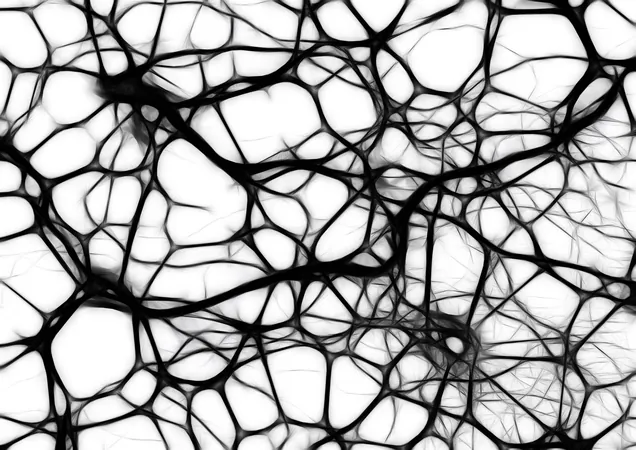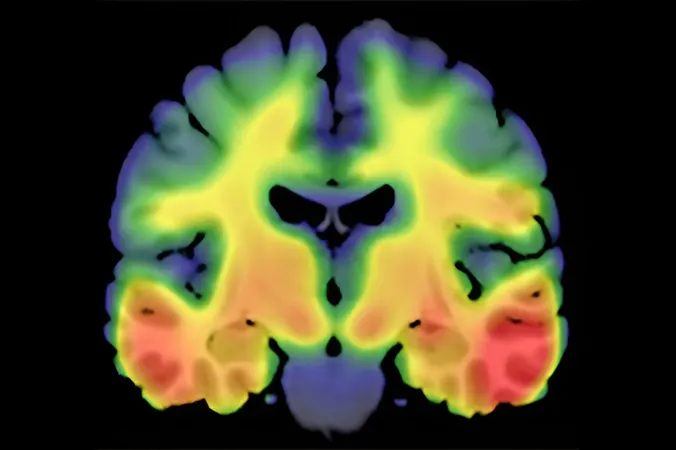
Revolutionary Technique Targets Hippocampal Neurons to Enhance Alzheimer’s Treatments
2024-10-12
Author: Mei
A groundbreaking research initiative at Kobe Gakuin University in Japan has unveiled a pioneering technique that genetically engineers insulin-fused proteins, specifically designed to target hippocampal neurons. This innovative methodology takes advantage of insulin's natural affinity for accumulating in the hippocampus, a crucial brain region intimately linked to memory formation and learning that is notoriously impacted by Alzheimer’s disease.
Alzheimer's disease primarily affects the hippocampus early in its progression, causing significant memory loss and cognitive decline. One of the major hurdles in treating this disorder is the blood-brain barrier (BBB), which effectively protects the brain from harmful substances but also prevents essential drugs from reaching their intended targets within the brain. Traditional methods of bypassing the BBB often involve invasive surgical procedures or techniques that yield limited drug absorption rates—leaving many potentially effective treatments off the table.
To tackle this challenge, the research team developed a novel class of proteins known as hippocampal neuron-targeting (Ht) proteins. By genetically fusing insulin subunits with therapeutic proteins, these new Ht proteins can effectively overcome the barrier and deliver therapeutic agents directly to the affected neurons. This targeted approach signifies a major advancement in drug delivery systems, turning low-absorption scenarios into effective therapeutic opportunities.
Detailed findings published in the Proceedings of the National Academy of Sciences reveal that cultured hippocampal neurons are able to engulf these Ht proteins through the body's natural cellular uptake mechanisms. The insulin subunits exploit the abundance of insulin receptors present on hippocampal neurons, triggering essential signaling pathways that enhance cellular uptake, or macropinocytosis, thereby allowing higher amounts of Ht proteins—and their attached therapeutic cargo—to be absorbed.
Crucially, researchers identified that cysteine residues in the insulin protein are vital for initiating this delivery mechanism, with one mutant form of the insulin B chain showing remarkable efficiency in transporting cargo proteins into neurons.
In corroborative animal studies, Ht proteins were observed to accumulate specifically in the hippocampal neuronal layers of treated mice. A follow-up experiment, where a macropinocytosis inhibitor was introduced, confirmed the proposed delivery pathway; a reduced uptake of Ht proteins was observed, solidifying the significance of this method.
The researchers hailed their hippocampal neuron-targeting technology, or HiNT, as a significant leap forward in the targeted delivery of drugs to the brain, stating, "Unlike other techniques, our HiNT can deliver drugs more safely and specifically to hippocampal neurons. This will be vital for maximizing the therapeutic potential of various biological treatments for Alzheimer’s disease and other neurodegenerative disorders."
Looking ahead, future studies will probe the clinical implications of the HiNT system, with a focus on determining the most effective and minimally invasive strategies to bypass the BBB and improve drug delivery efficacy.
This incredible advancement brings hope for new and improved treatment options for Alzheimer's and could potentially transform the future landscape of neurodegenerative disorder therapies. As research continues, the promise of safer and more effective treatments is shining brighter than ever.




 Brasil (PT)
Brasil (PT)
 Canada (EN)
Canada (EN)
 Chile (ES)
Chile (ES)
 España (ES)
España (ES)
 France (FR)
France (FR)
 Hong Kong (EN)
Hong Kong (EN)
 Italia (IT)
Italia (IT)
 日本 (JA)
日本 (JA)
 Magyarország (HU)
Magyarország (HU)
 Norge (NO)
Norge (NO)
 Polska (PL)
Polska (PL)
 Schweiz (DE)
Schweiz (DE)
 Singapore (EN)
Singapore (EN)
 Sverige (SV)
Sverige (SV)
 Suomi (FI)
Suomi (FI)
 Türkiye (TR)
Türkiye (TR)